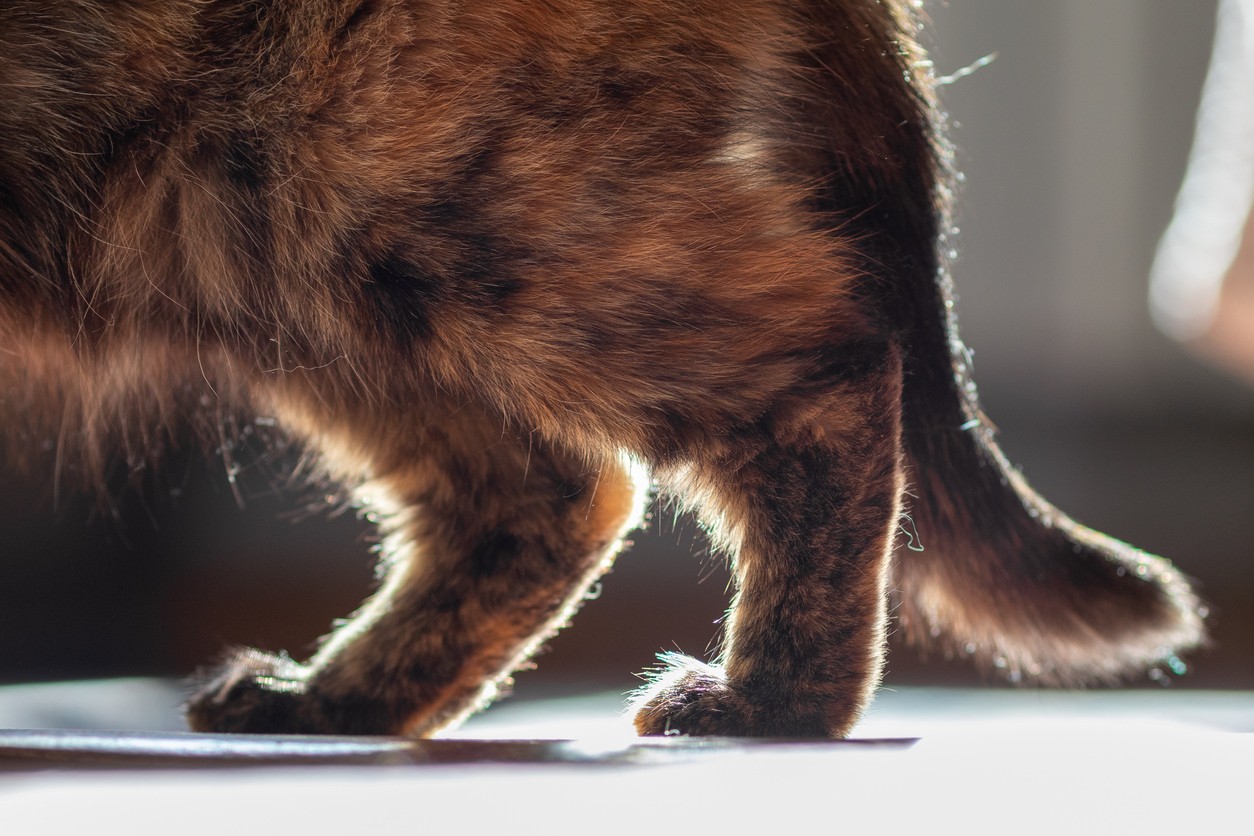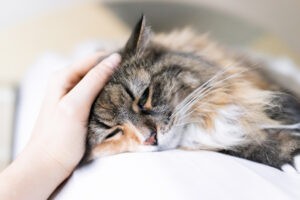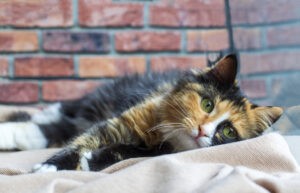Most cats hide how they feel and this secretive nature, which is part of their species mystique, can also make it difficult to recognize when your cat needs veterinary care.
Cats Conceal Pain to Survive
Although seemingly counterintuitive for modern cats, who enjoy the luxury of indoor living and devoted and protective human companions, hiding pain and weakness is a feline survival tactic. In the wild, visibly sick or debilitated cats make easy prey for predators, so cats adapted by concealing health disturbances, including issues that would nowadays be easily managed with a trip to the veterinary clinic.Feline veterinary experts now have pinpointed several reliable pain indicators in cats who, unlike dogs who may limp or whine, commonly signal their discomfort through unusual behaviors and personality changes.
Common pain signs in cats include:
- Hiding — Pain is a strange and unusual sensation for animals, because unlike people, they cannot rationalize their physical discomfort. In addition, painful cats feel more stress and fear, which intensifies their pain. Hiding is a natural protective response that provides painful cats with privacy and protection from perceived threats.
- Personality changes — Like people, cats in pain may act differently or out of character, such as being more irritable around other pets and human family members, reacting with defensive aggression, or avoiding previously enjoyable contact, such as handling or petting. Some cats may seek more attention and become clingy, while still others will appear hypersensitive and react fearfully to normal stimuli (e.g., a dropped object, loud household noise).
- Eliminating outside the litter box — Many cats avoid the litter box when they are in pain, which may be because stepping in or out aggravates arthritis inflammation in their joints or an underlying urinary condition is making urination painful. Cats then associate the pain with the litter box itself and will seek alternative locations to urinate and defecate.
- Decreased appetite — Pain can affect a cat’s appetite for a variety of reasons. For example, oral pain associated with dental disease or stomatitis may make eating uncomfortable. Also, your cat’s appetite can be affected because nausea and digestive distress can turn cats off of their food, while pain and its associated stress can suppress your cat’s appetite.
If your cat stops eating for more than a few days, seek veterinary care. Inappetence can lead to fatty liver disease (i.e., feline hepatic lipidosis)—a life-threatening complication in cats.
- Altered mobility — Musculoskeletal pain caused by arthritis or intervertebral disc disease (IVDD) forces cats to change their gait, posture, and movement patterns around the home. These changes, which are known as compensations, allow the cat to maintain relatively normal functions but to avoid or minimize physical discomfort. Visible signs may include:
-
- Arched back or topline
- Low body carriage
- Hesitation before jumping up or down
- Resting or pausing on staircases
- Inability to track a toy during play
- Eliminating outside the litter box or using only one box
- Choosing alternative routes to avoid pain (e.g., using furniture to divide one large jump into two smaller jumps, taking a longer route to avoid a slick floor)
- Unusual sleep patterns — Your cat’s sleep routine and sleep quality can change to sleeping more than usual, sleeping less, or sleeping in a more fitful fashion. Cats who appear to be sleeping more often may be avoiding physical activity to minimize their pain, while those sleeping restlessly may not be able to find a comfortable position. Over time, poor quality sleep can increase stress and impair your cat’s immune system.
- Increased or decreased grooming — Cats are naturally fastidious, so a sudden shift in their grooming routine can indicate an underlying problem. For example, painful cats may increase their grooming over a painful joint, which can lead to visible changes, such as localized hair loss or thinning and skin irritation. Other painful cats may stop grooming because they cannot comfortably bend or flex to reach specific areas. This quickly results in an unkempt or disheveled appearance, including a dull, greasy, or matted coat. Skin irritation, infection, and parasites may occur secondary to reduced grooming.
The Road to Relief: How to Help Your Painful Cat
Pain itself isn’t a diagnosis but an indicator of an underlying problem, which can vary significantly from dental disease, to digestive disorders, to urinary problems, to arthritis, trauma, or cancer.
If your cat is demonstrating pain signs or simply not acting normally, schedule a visit with your regular veterinarian. Accurately identifying the pain source is essential to ensure you develop an effective and safe treatment plan, which will involve a nose-to-tail physical examination and likely other diagnostic tests, such as blood work or imaging (e.g., X-rays, ultrasound) to properly diagnose the reason for your cat’s pain.
Cats may not be an open book about what they’re thinking or how they’re feeling, but with the advances in feline health and behavior, we can now read between the lines. If your cat is in pain, but your regular veterinarian’s office is not available, check-in online or drop by an UrgentVet location near you.




